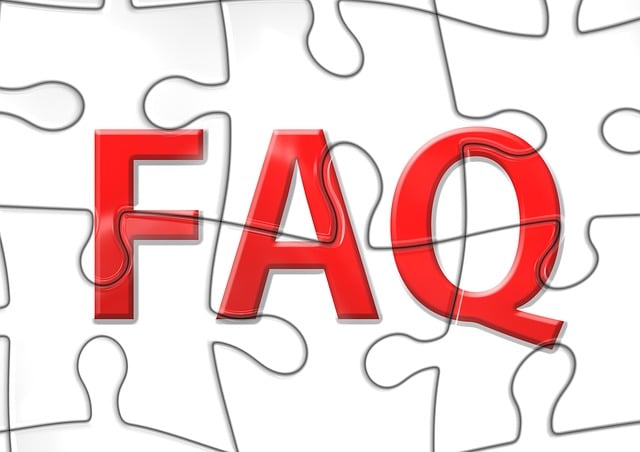Eye injuries from car accidents can be severe and life-changing.
Possible Eye Injury Settlements
| Injury Severity | Average Settlement Range |
|---|---|
| Minor | $10,000 – $30,000 |
| Moderate | $30,000 – $75,000 |
| Severe | $75,000 – $200,000 |
If you’re dealing with this in Arizona, it’s important to know what to expect when filing a claim.
You may be wondering about the average settlement amounts.
While each case is different, settlements for eye injuries can be significant.
Common factors affect the settlement amount:
- Severity of the injury: Minor injuries may lead to smaller settlements. Severe injuries could result in larger amounts.
- Medical expenses: All bills, including surgeries and medications, are considered.
- Lost wages: If you can’t work because of your injury, you might get compensation for lost income.
- Pain and suffering: Compensation may include non-economic damages.
In Arizona, you may need a lawyer to help navigate the process.
Legal advice can ensure you get a fair settlement.
Keep records of all medical treatments and expenses.
These will be important when making your claim.
If the accident was another driver’s fault, their insurance may cover your damages.
Knowing what affects your claim can make the process less overwhelming.
It’s key to remember that each case is unique, and settlements can vary widely based on specific details.
Hire a Personal Injury Lawyer
You need a personal injury lawyer to help negotiate medical bills and gather crucial evidence to strengthen your case.
A lawyer can make a significant difference in your settlement.
Negotiating Medical Bills
Why hire a personal injury lawyer for negotiations?
Dealing with medical bills after an eye injury can be overwhelming.
A personal injury lawyer has the experience to negotiate with hospitals and insurance companies.
This can help reduce your out-of-pocket expenses.
What does the lawyer do?
- Reviewing Medical Bills: Your lawyer examines the bills to ensure all charges are accurate.
- Negotiating Reductions: They work to get lower charges for treatments and procedures.
- Handling Insurance Claims: The lawyer interacts with insurance companies to make sure your bills are paid.
Outcome
Hiring a lawyer often results in lower medical bills.
This can leave you with more money from your settlement.
Gathering Crucial Evidence
Importance of evidence
Evidence is critical for proving fault and the extent of your injuries.
Without solid evidence, you might not get the compensation you deserve.
Types of evidence a lawyer gathers
- Traffic Camera Footage: Your lawyer can obtain video that shows the accident.
- Police Reports: They will get official reports detailing the accident.
- Medical Records: They collect records to show the severity of your eye injury.
- Witness Statements: The lawyer interviews witnesses to get their accounts.
How evidence helps
Strong evidence can lead to a higher settlement.
Your Arizona lawyer ensures that all necessary evidence is collected and presented effectively.

Compensation Factors for Eye Injuries
Getting compensation for an eye injury is dependent on things like lost wages, medical bills, and pain and suffering.
Each factor is crucial for determining the settlement amount.
Calculating Lost Wages
When you have an eye injury, you may need time off work.
This can lead to lost paychecks. You should gather documents that show your usual earnings.
This includes pay stubs or bank statements.
Your employer can also provide a letter detailing the number of days you missed and your daily rate.
This helps calculate how much you are owed for lost time.
Don’t forget to include any bonuses or overtime you missed out on.
Medical Bills Assessment
Medical bills are another critical factor.
These include immediate costs like emergency room visits and surgeries.
Ongoing treatments like follow-up visits, medications, and physical therapy are also considered.
Collect all your medical receipts and bills.
Include costs for medical equipment like eye patches or special glasses.
Even parking fees at medical facilities can count.
Pain and Suffering Estimation
Pain and suffering refer to both physical and emotional distress caused by the injury. This can impact your quality of life.
To estimate this, keep a diary detailing your pain levels and emotional state.
You might need statements from your doctor to support your claim. Sometimes, insurance companies use a multiplier method.
They multiply your medical bills by a number (usually between 1.5 and 5) to estimate your pain and suffering.
Compensation factors are key when determining settlement amounts for eye injuries.
By focusing on lost wages, medical bills, and pain and suffering, you can better understand what to expect in your case.
Eye Injuries From Car Crashes
Car accidents can cause various eye injuries.
These injuries range from minor to severe. Understanding these injuries can help you seek the right treatment.
Corneal Abrasions
A corneal abrasion is a scratch on the eye’s surface. It’s painful and can make it hard to see.
Hyphema
This happens when there’s bleeding in the front part of the eye. It can block your vision and needs urgent care.
Orbital Fractures
Bones around the eye can break in a crash. This can lead to black eyes, swelling, and vision problems.
Retinal Detachment
A crash can cause the retina to pull away from the back of the eye. This is serious and can lead to blindness if not treated quickly.
Traumatic Iritis
Inflammation inside the eye is called iritis. It can be painful and affect your vision.
Foreign Objects
Debris can get into your eyes during a crash. This can cause infections or damage.
Chemical Burns
Airbag deployment can release chemicals that burn the eyes. This requires immediate medical attention.
Optic Nerve Damage
Severe trauma can injure the optic nerve. This can result in permanent vision loss.
Be aware of these common eye injuries after a car crash. If you experience any eye pain or vision changes, see a doctor immediately.

Medical Costs for Eye Injuries in Arizona
Eye injuries from car accidents can be costly. Medical bills for these injuries may vary depending on the severity and required treatments.
Common expenses include:
- Emergency Room Visits: $500-$5,000
- Consultations with Specialists: $200-$600 per visit
- Diagnostic Tests (MRI, CT scans): $1,000-$3,000
- Surgery: $3,000-$20,000
Follow-up care also adds to the total cost. Multiple visits to eye doctors and additional tests are often necessary.
Don’t forget the medication costs, which can range from $50 to $200 per prescription.
Sometimes, physical therapy is needed for recovery. These sessions can cost between $50 and $150 each.
The total amount spent depends on how many sessions you need.
Vision aids like glasses or contact lenses might be essential.
These can cost another $100 to $800.
The costs can quickly add up, placing a financial strain on you or your family.
Understanding these expenses can help you better plan and seek appropriate compensation.
Work and Recovery
Returning to work and managing recovery after an eye injury from a car accident can be challenging.
You need to balance your health needs with your job requirements to ensure a successful recovery.
Recommended Recovery Time
The amount of time you should take off work depends on the severity of your eye injury and the type of job you have.
Most minor eye injuries might only need a couple of days to a week of rest.
Severe injuries, like retinal detachment or significant cuts, can require several weeks or even months of recovery.
Your doctor will provide specific recommendations based on your health.
Follow their advice strictly to avoid complications.
Taking the time you need to heal is crucial.
Trying to return to work too soon can lead to further damage and prolong your recovery.
Impact on Employment
Your eye injury can affect your ability to perform your job effectively.
For example, if you work in a role that requires a lot of screen time, you might need special arrangements like screen filters or frequent breaks.
More physical jobs might need reassignment to lighter duties until you fully recover.
Communicate with your employer about your condition and what accommodations you may need.
The Americans with Disabilities Act (ADA) offers protections that might require your employer to make reasonable adjustments to help you return to work.
Properly managing your recovery can help you get back to work safely without jeopardizing your health.
The Settlement Process Timeline
When dealing with an eye injury from a car accident in Arizona, the settlement process can take some time. The timeline varies depending on many factors, including the severity of the injury and the specifics of the case.
Initial Consultation: The process begins with meeting a lawyer to discuss your case. This can take a few days to a week.
Medical Treatment: You must complete your medical treatment or reach a stable condition before moving forward. This can take weeks or even months.
Investigation: Your lawyer will gather evidence, including medical records, police reports, and witness statements. This step usually takes a few weeks.
Filing a Claim: Once the investigation is complete, a claim is filed. It can take a few days to a few weeks to draft and file the claim.
Settlement Negotiations: Negotiations with the insurance company or the opposing party begin. These can take several weeks to months, depending on how cooperative the other side is.
Reaching a Settlement: If both sides agree, an official settlement is reached. This step can take another few weeks to finalize the paperwork and receive the payment.
Court Proceedings (if necessary): If a settlement can’t be reached, the case might go to court. This adds several months to the timeline as court schedules can be quite busy.
**Average Timeline:**
| Initial Consultation | 1 week |
| Medical Treatment | 1-6 month |
| Investigation | 2-4 weeks |
| Filing a Claim | 1-3 weeks |
| Negotiations | 1-6 months |
| Reaching Settlement | 1-4 weeks |
| Court Proceedings | Several months+ |
Each step is crucial, and the timeline can vary greatly based on individual circumstances.

Proving an Eye Injury From a Crash
To prove an eye injury from a car crash in Arizona, you need medical records.
These records should show that the injury happened due to the accident.
Doctors’ reports, test results, and prescription records are crucial.
Photographs of your injury taken shortly after the accident can also support your case.
Make sure the photos are clear and time-stamped.
Witness statements can help a lot. If someone saw the crash or the injury, their account can back up your claim.
Collect names and contact details of anyone who saw what happened.
It’s important to keep a journal detailing your symptoms and how the injury impacts your life.
Entries should include pain levels, difficulties with daily tasks, and emotional struggles.
This journal can serve as a personal account of your suffering.
Finally, getting a letter from your employer can show any missed work or changes to your job duties due to the injury.
Employers can confirm the impact on your ability to work.
By gathering these pieces of evidence, you strengthen your case for an eye injury settlement.
Negotiating With Insurance Companies
Dealing with insurance companies like State Farm, GEICO, Farmers, AAA, Progressive, or Allstate after an eye injury can be very challenging.
Insurance companies often want a recorded statement right away.
This can be stressful. They may keep calling you on the phone, which adds pressure.
When negotiating, it is important to be prepared. Know your medical costs and any other expenses related to the injury.
Consider having a lawyer to help you. A lawyer can handle communications with the insurance company.
Key Points to Remember:
- Document Everything: Keep all receipts and medical reports.
- Stay Consistent: Make sure your story is the same every time.
- Be Patient: Negotiations can take time, so do not rush.
Using these tips can help you get a better settlement.






